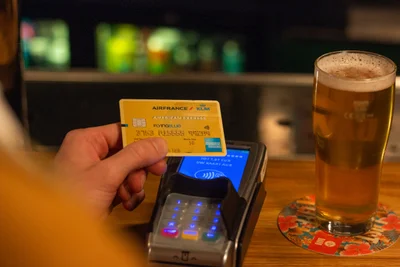The History of Card Machines: From Imprinter to Chip and PIN
The History of Card Machines: From Imprinter to Chip and PIN
The card machine, also known as a credit card terminal or point of sale (POS) machine, is an electronic device used to process payments made with credit and debit cards.
Card machines have become an essential tool for businesses, allowing them to accept a wide range of payment methods and making transactions faster and more convenient for customers.
But where did the card machine come from, and how has it evolved over time?
The Early Days: The Card Imprinter.
The first card machines were manual imprinters that used carbon paper to make a copy of the card details. These machines were invented in the early 20th century and were widely used until the 1980s.
To make a payment, the merchant would place the customer's card onto the imprinter, which would press down onto the card and transfer the card details onto a sales slip. The customer would then sign the slip, and the merchant would keep one copy and give the other to the customer as a receipt.
The Magnetic Stripe Era:
In the 1970s, magnetic stripe cards were introduced, which allowed for faster and more accurate processing of payments. Magnetic stripe cards contained a strip of magnetic tape that contained the cardholder's information.
Card machines were updated to read the magnetic stripe, and instead of imprinting the card details onto a sales slip, the machine would electronically read the information from the magnetic stripe and authorize the transaction in real-time
The Chip and PIN Revolution:
In the 2000s, chip and PIN technology was introduced to improve payment security. Instead of a magnetic stripe, chip and PIN cards contain a microchip that stores the cardholder's information.
When making a payment, the cardholder inserts their card into the machine and enters a four-digit PIN to authenticate the transaction.
Chip and PIN technology has greatly reduced payment fraud, as it is much harder for criminals to replicate the information stored on the microchip.
In addition, card machines have become more advanced, allowing for contactless payments and mobile payments .In conclusion, the card machine has come a long way since its early days as a manual imprinter.
From the magnetic stripe era to the chip and PIN revolution, card machines have evolved to meet the changing needs of businesses and consumers. With the continued advancement of technology, it will be exciting to see what the future holds for the card machine.